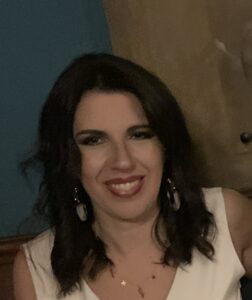Content
Some will likely be constant over the entire output range; others will vary in steps. For example, a single-shift operation might require only one departmental supervisor, but the operation of a second shift will require a second supervisor. INVESTMENT BANKING RESOURCESLearn the foundation of Investment banking, financial modeling, valuations and more. I don’t known which suits you but let me say you your helps me , so go forward.
While these expenses are logically linked to products, they are still period costs because they can be separated from the inventory purchasing and production process. If your company makes men’s dress shoes, your direct materials are shoelaces, rubber, and leather. Businesses that resell products — called merchandising businesses — include only direct material in their product costs. Operating expenses, like selling and administrative expenses, make up the bulk of your period costs.
AccountingTools
Period Cost is the cost which relates to a particular accounting period. Accurately calculating product costs also assists with more in-depth analysis, such as per-unit cost. Per-unit cost is calculated by dividing your costs by the number of units produced. It is an important metric, particularly when determining product pricing.
Is salary a period cost?
Period costs are those costs recorded as an expense in the period they are incurred. Selling expenses such as sales salaries, sales commissions, and delivery expense, and general and administrative expenses such as office salaries, and depreciation on office equipment, are all considered period costs.
In addition to the distinction between manufacturing and non-manufacturing costs, there are other ways to look at costs. Costs can also be classified as either product cost or period cost. To understand the difference between product costs and period costs, we must first refresh our understanding of the matching principle https://www.scoopearth.com/the-importance-of-retail-accounting-in-improving-inventory-management/ from financial accounting. Generally costs are recognized as expenses on the income statement in the period that benefits from the cost. For example, if a company pays for liability insurance in advance for two years, the entire amount is not considered an expense of the year in which the payment is made.
Summary of Product and Period Costs:
It’s a laborious process, but it’s also one of your manufacturing business’s most critical calculations because of its implications for product prices and cost of goods sold. When an item is sold, your company records the product cost as cost of goods sold on the income statement. Product Costs include any cost of acquiring or producing a product. If you manufacture a product, these costs would include direct materials and labor along with manufacturing overhead.
- Handling and storage costs; if they are part of the production process and it cannot be completed without storage for some time.
- Inventoriable costs are all costs of a product that are considered assets when the costs are incurred and are expensed as cost of goods sold once the product is sold.
- Your business’s recurring expenses, aside from inventories and production expenses, are periodic.
- Product costs refer to all costs incurred to obtain or produce the end-products.
An understanding of period costs helps you analyze your financial statements. Common administrative expenses include rent and utilities on your office space, but not on your production facility. You also include wages of employees not involved in the production process and their payroll taxes.
How to Prepare an Income Statement Under Absorption & Marginal Costing
When a company spends money on an advertising campaign, it debits advertising expense and credits cash. These costs are directly expenses and reported on theincome statement. construction bookkeeping In other words manufacturing overheads is like a reserve where production cost are “binned” if they escape direct material, direct labour costs or direct expenses.
Depreciation enables companies to generate revenue from their assets while only charging a fraction of the cost of the asset in use each year. It will keep accruing, and an entity will have to bear the same without profit or revenue. A direct cost is a price that can be completely attributed to the production of specific goods or services.
This inventory remains as an asset until the goods are sold, at which point the inventory is gone, and the cost of the inventory is transferred to cost of goods sold on the income statement . Under different costing system, product cost is also different, as in absorption costing both fixed cost and variable cost are considered as Product Cost. On the other hand, in Marginal Costing only the variable cost is regarded as product cost.
What are the 2 types of period costs?
Period costs are any costs a company incurs indirectly related to the product development and production process. Period costs can be divided into two categories: selling and administrative costs.


